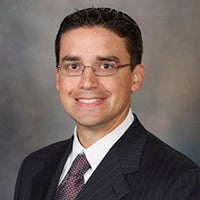Doctor presents on substance abuse effects for youth
Published 9:00 pm Friday, January 21, 2022
|
Getting your Trinity Audio player ready...
|
By Alex Guerrero
If you’re a parent and think your child would never dip into alcohol, marijuana or smoking, you may want to think again. According to Mayo Clinic’s Dr. Tyler Oesterle, $524 billion was spent yearly on substance use disorders.
Oesterle, the medical director at the Mayo Clinic’s Intensive Addiction Program as well as medical director of Fountain Centers, cited the number during a webinar presentation Thursday afternoon focused on drug and alcohol impact on youth.
He defined substance use disorders as a chronic disease characterized by compulsive behavior, continued abuse despite bad drug consequences and persistent changes in brain structure and function. It’s also a brain illness starting when an individual is exposed to those substances and progresses on its own.
“[Addictive substances] tap into the brain’s communication system, and they change the way in which the brain normally sends and receives information within that system,” he said. “They mimic natural systems and they fool the systems in the brain into being overactive.”
Most substances of abuse target the dopamine system, a system that helps regulate emotions and develops cognitive processes.
“The primary [way] in which these substances of abuse affect the dopamine system is to over-activate that system in particular areas of the brain,” he said.
According to Oesterle, most adults with substance-use disorders started being exposed at an early age.
“We know that their brains are growing and developing,” he said. “We know that development occurs all the way through the mid-20s, and we know that it’s a development from the back part of the brain to the front.”
Oesterle said it meant judgment and restraint were some of the last things to develop, meaning adolescents have difficulties controlling emotions and are easily excited. They also have poor planning and judgment. And those characteristics can be problematic. The most abused substances among younger people are alcohol, marijuana and cigarettes.
“Adolescents are much more likely to become addicted to marijuana as opposed to adults,”he said.
They’re also more likely to binge-drink and hide their use. He said most likely adolescents who enter treatment were referred there through the juvenile justice system.
Adolescents are less likely to seek treatment as well.
Oesterle touched on the history of cigarettes and nicotine.
“There was a lot of advertisements, studies and clinical reports, and these types of research studies [when studying the effects of nicotine and health] that cigarettes were really a positive thing,” he said.
But as more information came into focus and concerns were voiced, the message that smoking was bad became more apparent.
Today, 3,000 teenagers start smoking each day nationwide, and 90% of adult smokers started as teenagers.
But it’s alcohol that’s the most common substance of abuse for adolescents, and an estimated $6 billion will be spent in advertising by 2023.
“This is this idea that alcohol is medicine again as there was this push to put some restrictions on alcohol and how it should be used,” he said.
Today, binge-drinking is the most common form of drinking, and more than 4,300 deaths underage people die each year.
Alcohol also causes problems with brain processing speed and attention.
He ended his presentation with a focus on marijuana.
“The advertising for marijuana has increased significantly, so there’s a lot more ads,” he said. “The majority of these ads are actually on internet displays. We’re not seeing a lot of these ads in newspapers.”
Perception of risk was key for substance use disorders, particularly to marijuana.
“In the ’70s there was … low perceived risk so there was high past year use,” he said. “And then perceived risk increased. There was a lot of advertising campaigns back then talking about the dangers associated with it, and so the perceived risk went up and the use went down.
We saw that kind of flip … in the ’90s, and things have kind of stabilized a bit.”
According to Oesterle, ads portray a message it’s cool to smoke and that it’s medicine.
But he also posted some encouraging news: the downward trends in alcohol and cigarettes, though vaping has increased in popularity to the point of surpassing marijuana, whose popularity has remained roughly the same.




